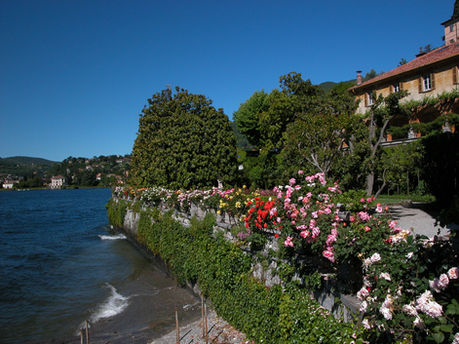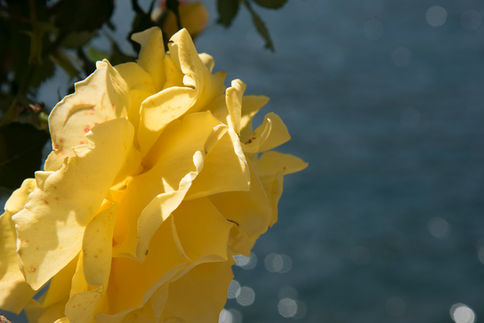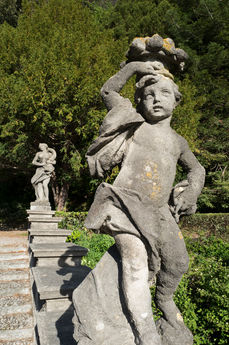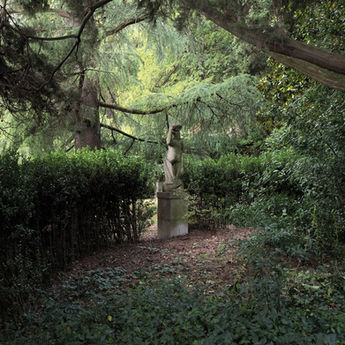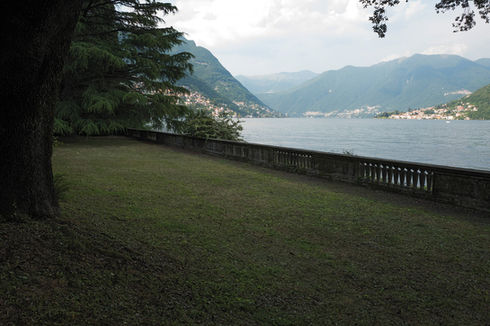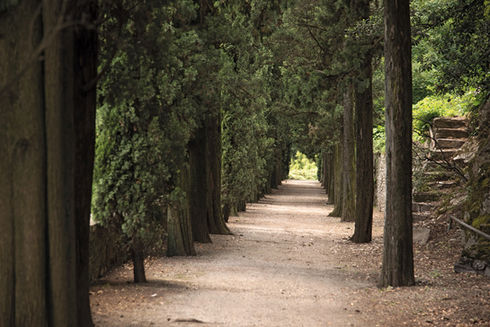The Gardens

THE GARDENS OF VILLA PIZZO
The grounds at Villa Pizzo extend along the hillside terraces and Lake Como creating many singular gardens
all different from one another.
THE VILLA SURROUNDINGS
To the left of the Villa is a fountain bordered by a Rosa x odorata "Mutabilis", located in the shadow of the century old Magnolia grandiflora; luxuriant century old Cycas border a path and a lemon-house resting against a wall covered with Ficus punila and Fuchsia magellanica. The winter version of the greenhouse, with its glass panes, protects orange trees, Citrus japonica, pink grapefruits, lemon trees and geraniums.
THE ROSE COLLECTION
The remarkable rose collection can be admired throughout the entire gardens. Among them are centennial specimens, planted by the Marchioness Volpi Bassani at the beginning of the last century, and much more recent hybrids. Many varieties can be seen all over the espalier that runs alongside the lake. A grandiose Rose banksia has been growing on the façade of the stables for years, just like the rambling pink variety that covers the walls of the Palazzina and finally the fragrant hedges surrounding the fountains.
GENOA AREA
Nearing the Genoa area there is a narrow westward path. This area gets its name because of the southern exposure that favours a microclimate similar to the Ligurian Riviera. Varieties of plants such as agave, Cordyline australis, peonies, calla lilies, and fruits such as bergamot, grapes, pears, capers, myrtle, olives and prickly pears thrive here. In this part there is also a wonderful greenhouse from the early 1900s with its overlapping glass panes.
THE STAIRCASE AND THE PORCH
On the other side of the Villa, adjacent to the terrace, is the staircase adorned with striking sandstone statues. Below the porch built by Pietro Volpi Bassani is an enclosed passage that connects the Villa to the Palazzina.
THE ITALIAN GARDEN
A beautiful specimen native to the East of Cinnamomum camphora is deemed to be the tree of life and is considered sacred. It is the focal point of this Italian garden, together with the hedges of Boxus, Lagerstroemia, Olea fragrans, Davidia involucrata, verbena bushes, tropical hibiscuses and lemon trees. Up on the spacious terrace, a specimen of Cordyline Australi lazily leans over the lake.
THE GRAND DOCK
One of the most suggestive places in the gardens is the Taxus baccata path, ingeniously built by the garden architect, Ettore Villoresi during the mid 1800s. It leads to the dock built by the Volpi Bassani family. Below the terrace overlooking the basin of Moltrasio, the Viceroy’s gulet is still visible today.
THE ENGLISH GARDEN
In the northernmost area is the romantic English garden, with its ever-changing landscape. It was fashioned for strolling among majestic specimens, mostly evergreen trees, stone grottos and porticoes and a terrace overlooking the lake. Here is the Mausoleum designed by Luca Beltrami, the resting place of the Volpi Bassani family.
THE CYPRESS BOULEVARD
The cypress boulevard is located on the uppermost terracing, perfectly positioned to protect the Villa from cold northerly winds. On the side is the Crotto (a natural grotto), which served the Mugiasca family as storage for crops and as an icehouse. The Volpi Bassani family redecorated the exterior in the late 1800s.



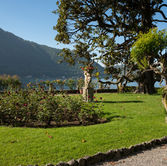





















GUIDED TOUR
The villa and the garden are open to the public on guided tours.












